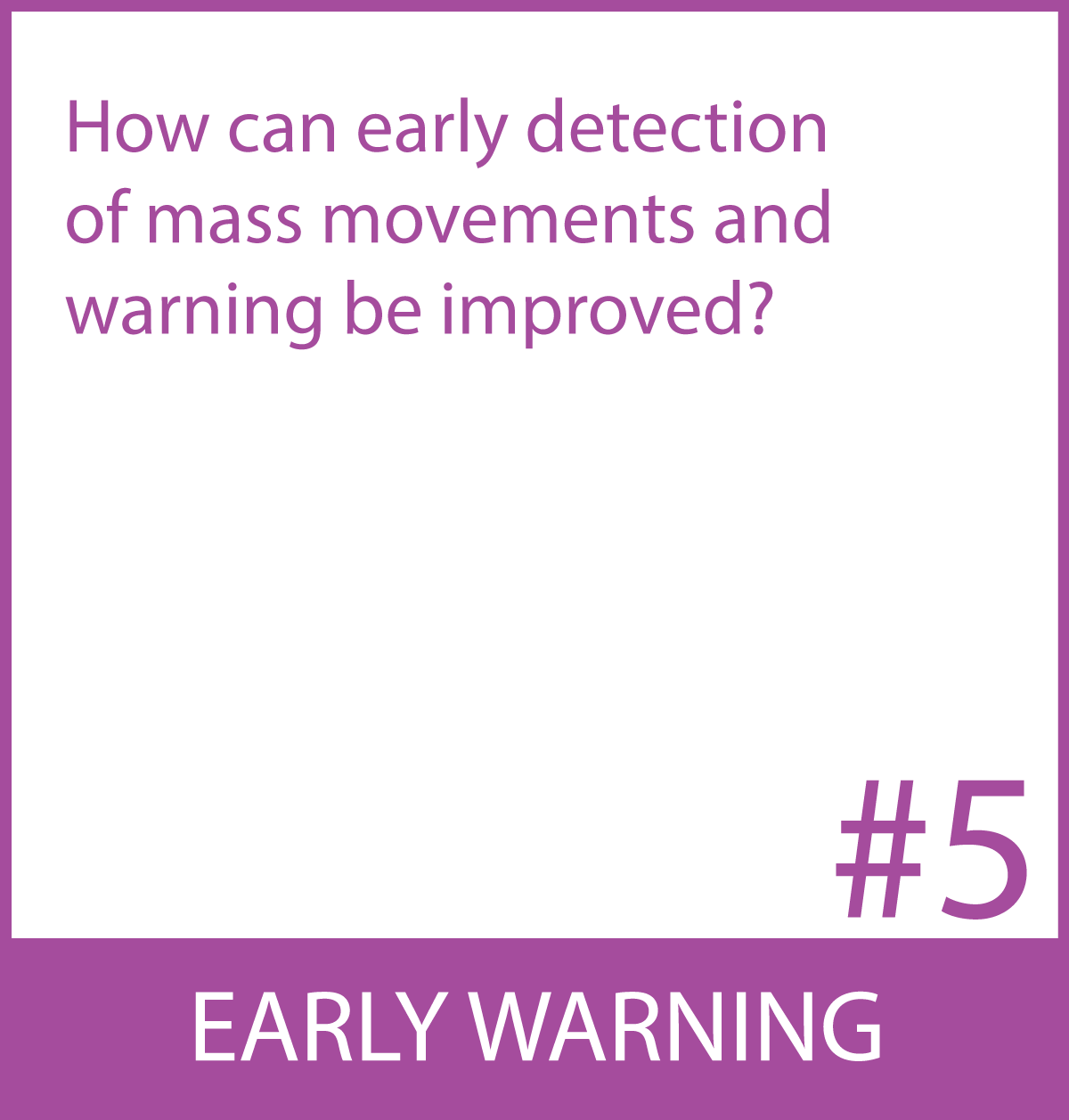
Work package 5 – early warning ¶

Climate change is rapidly altering mountain environments. Combined with the growing pressure on these regions through recreational and commercial use, there is an increasing need for reliable tools to predict, monitor, and provide early warning of natural hazards. In this project, we focus on two key test sites – the Spitzer Stein instability (BE) and the region of Davos (GR) – and combine several state-of-the-art technologies to advance early warning and monitoring systems of alpine mass movements. We integrate satellite-based interferometric synthetic aperture radar (InSAR) data and optical images to monitor slope instabilities, evaluate how temperature, precipitation, and snow melt drive slope deformation, and assess how these driving factors are expected to change under future climate scenarios. Complementing the coarse temporal resolution of the satellite data, we also leverage seismic and infrasound measurements to characterize the subsurface processes driving the instability at Spitzer Stein. Cataloguing all the mass movements at this key location and training an intelligent detector to identify them in real time, can improve early warning and alarm systems for these hazards.
Further leveraging the seismic data, as well as automatic snow avalanche detection systems around Switzerland, we also exploit recent advances in machine learning and avalanche detection to improve the spatio-temporal resolution of avalanche forecasting in Switzerland and characterize changes in avalanche hazard due to climate change.